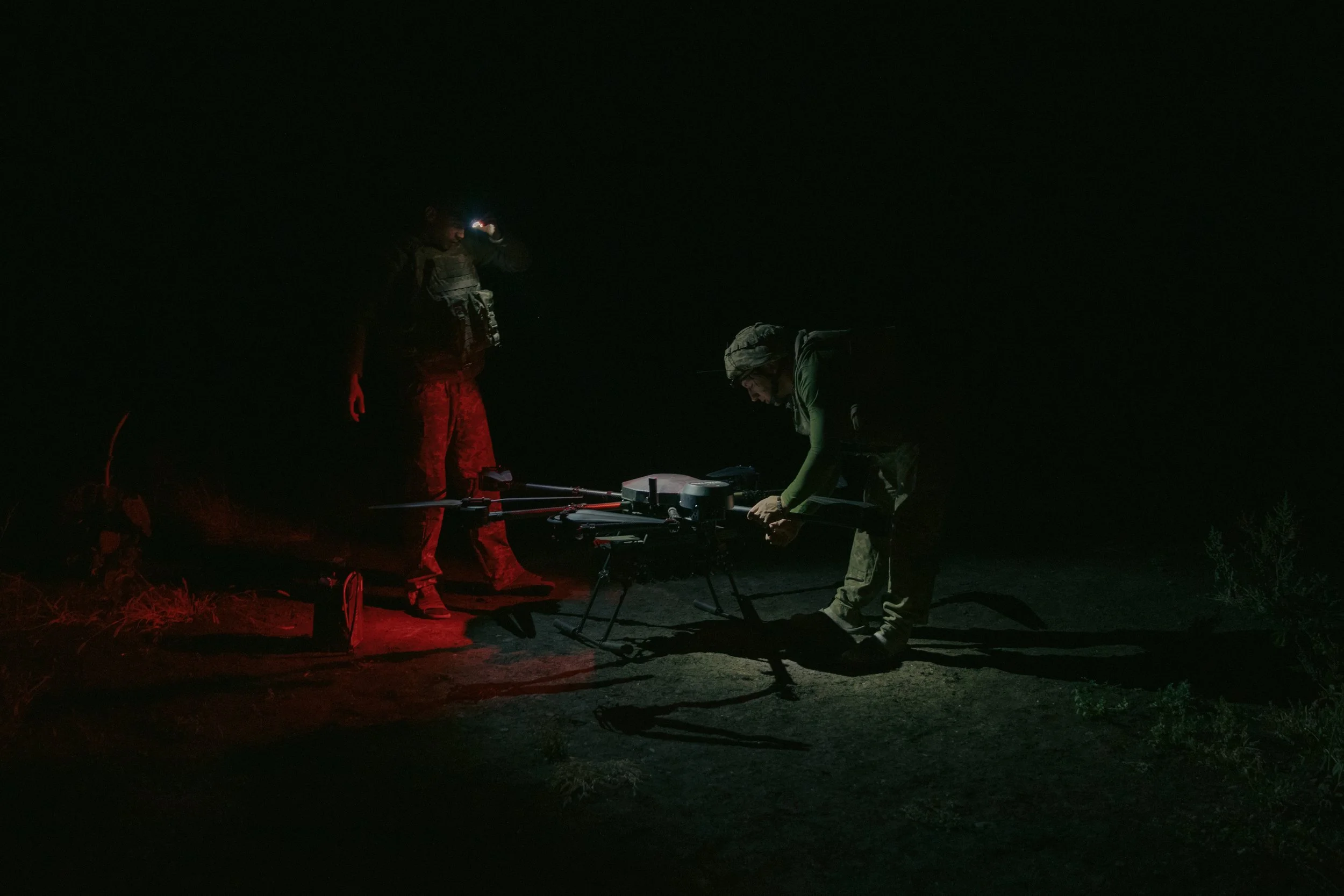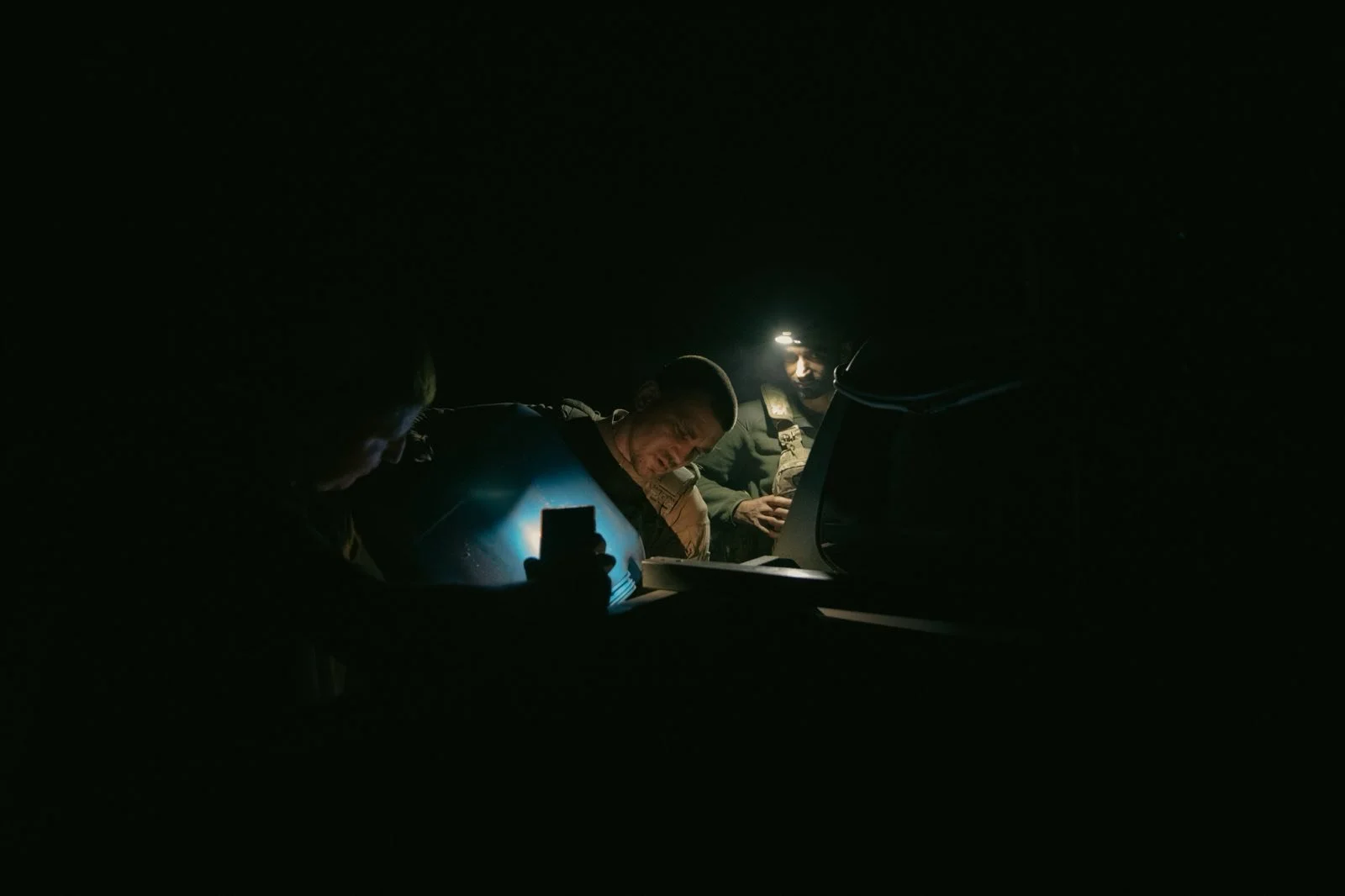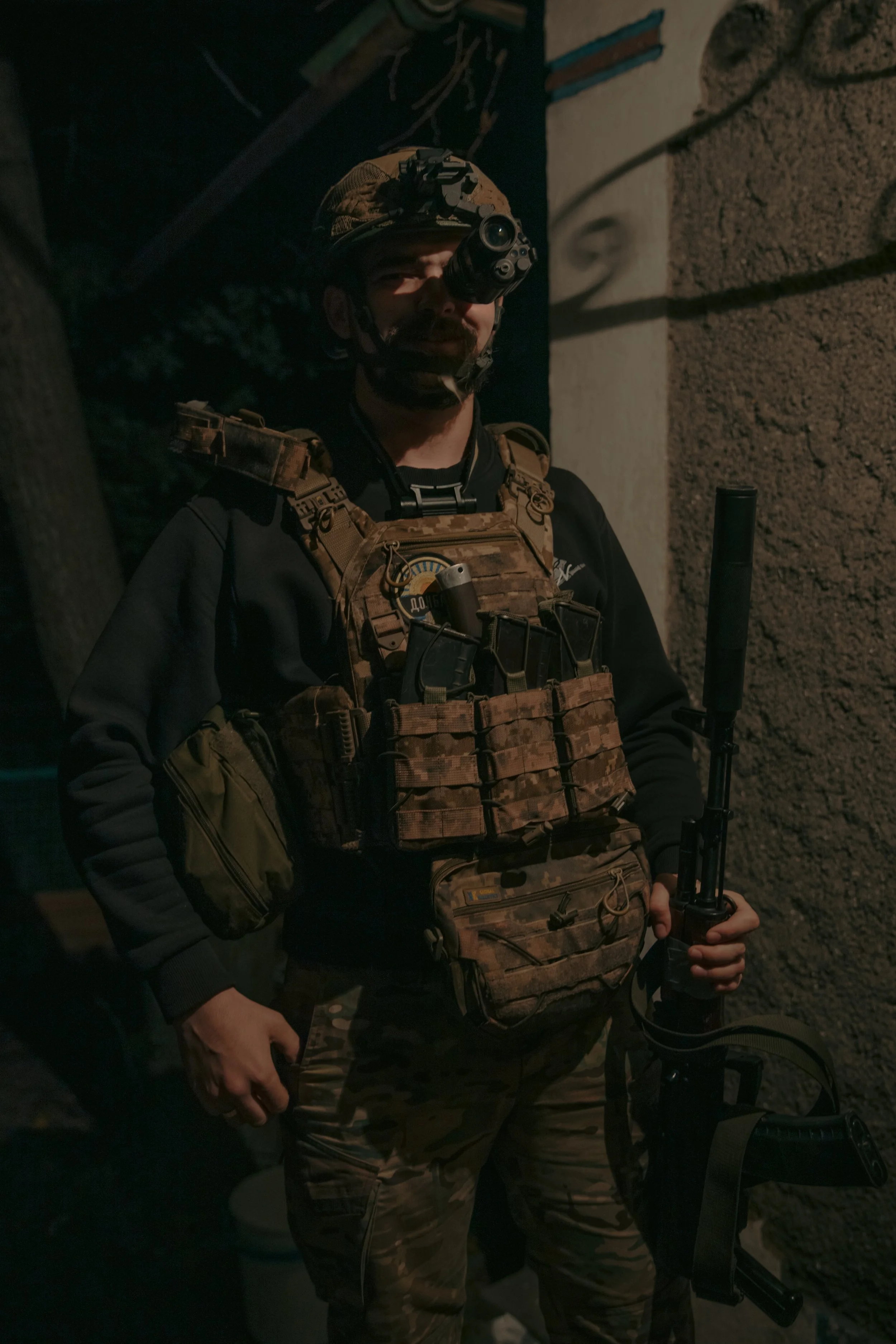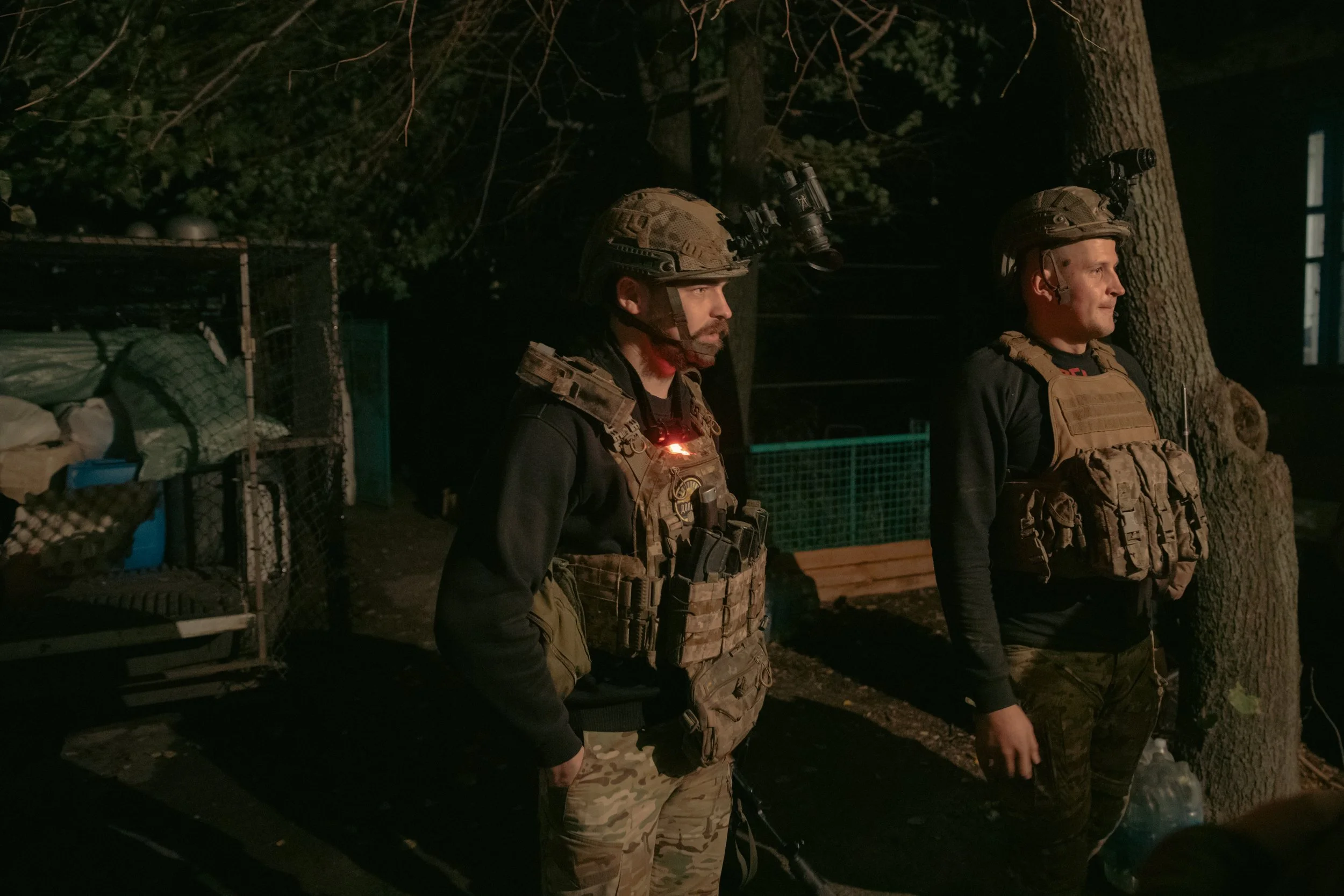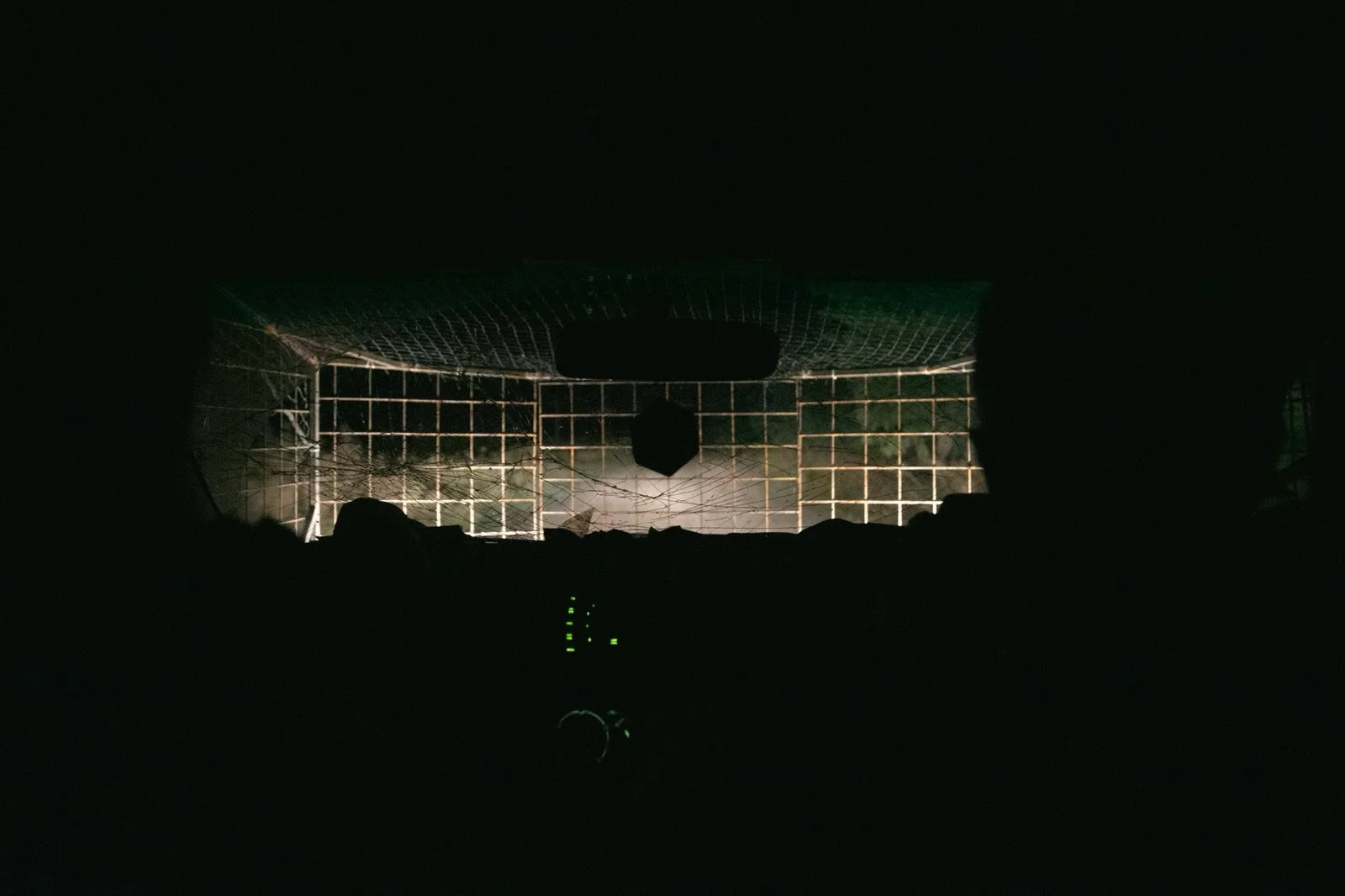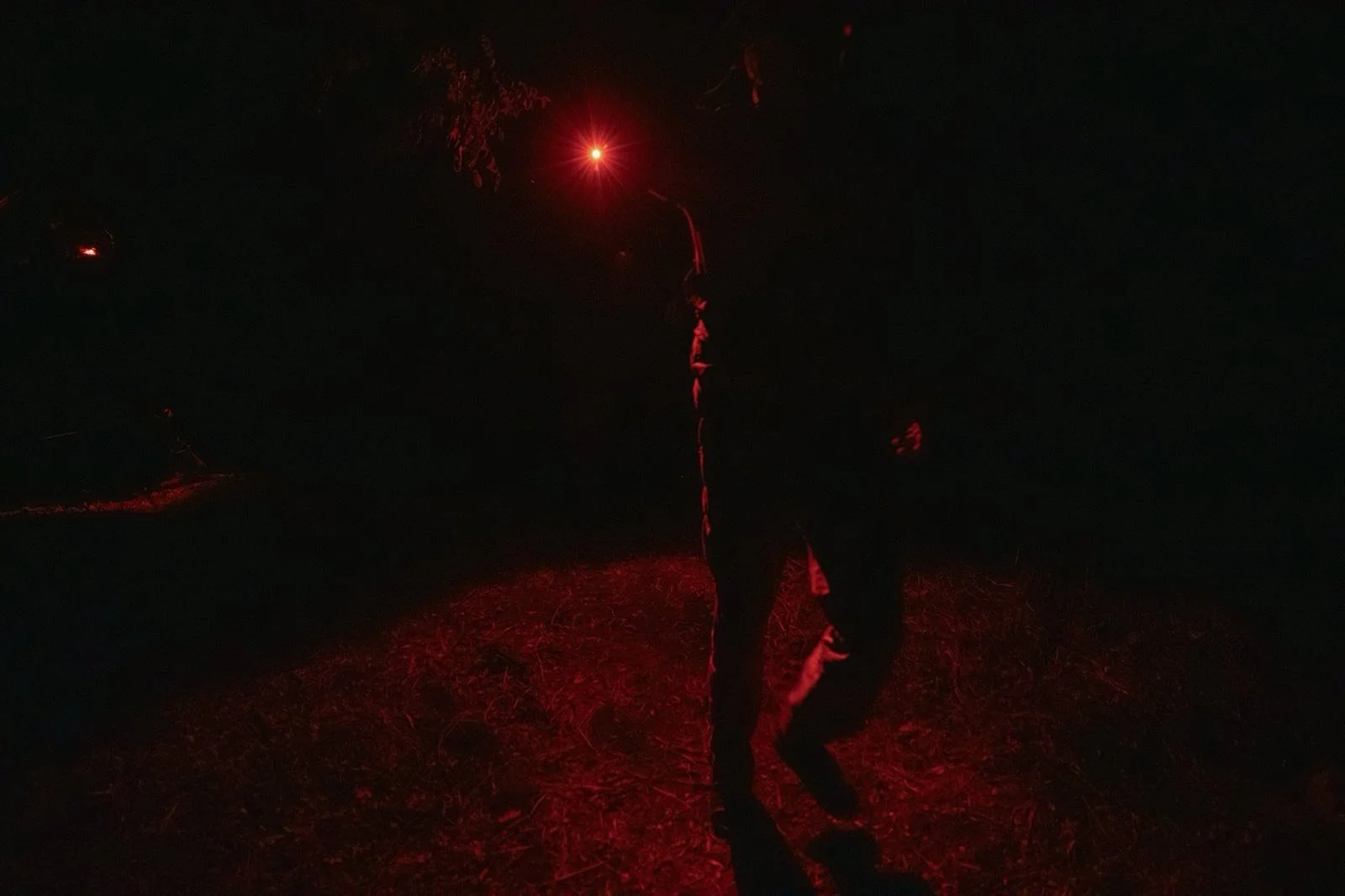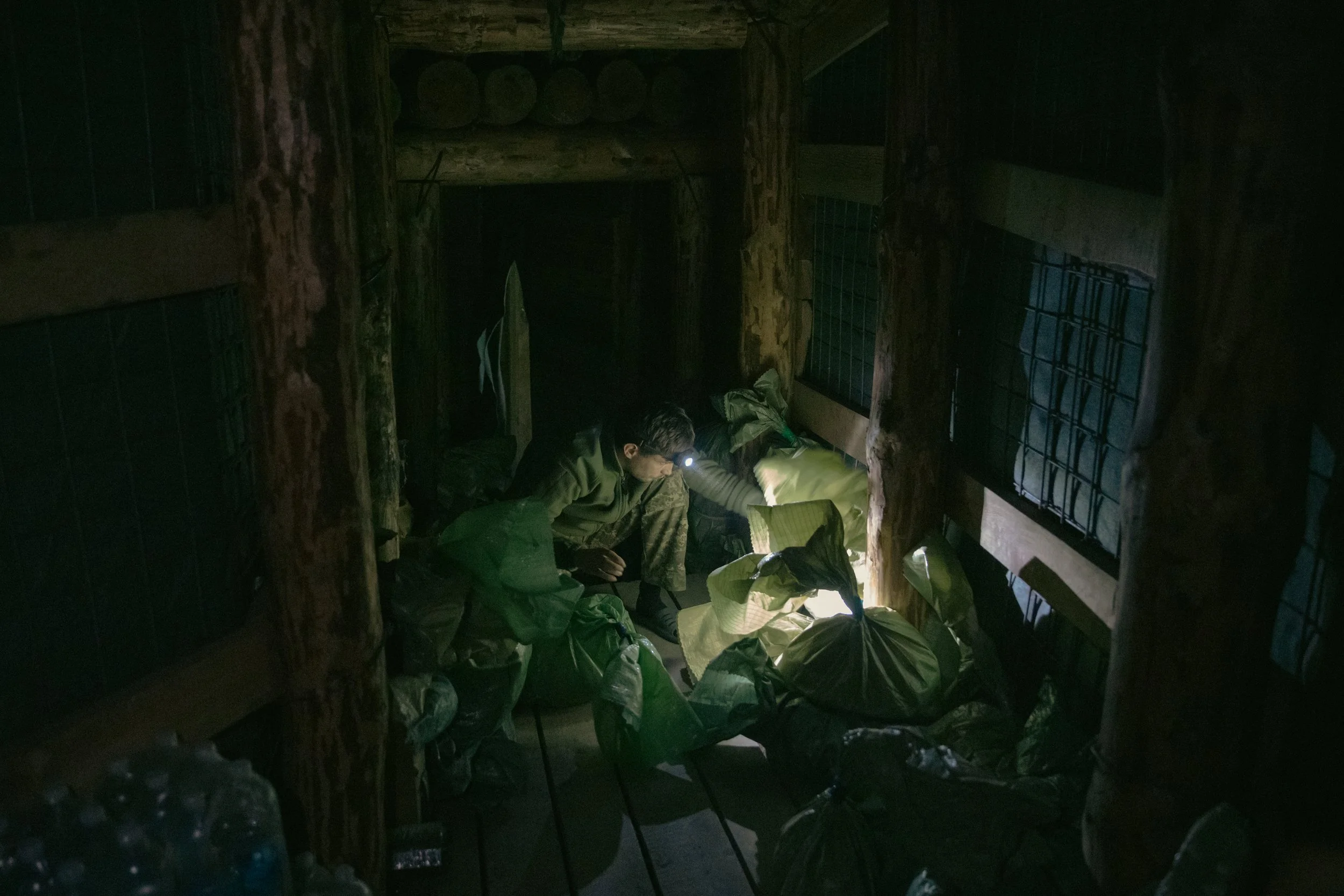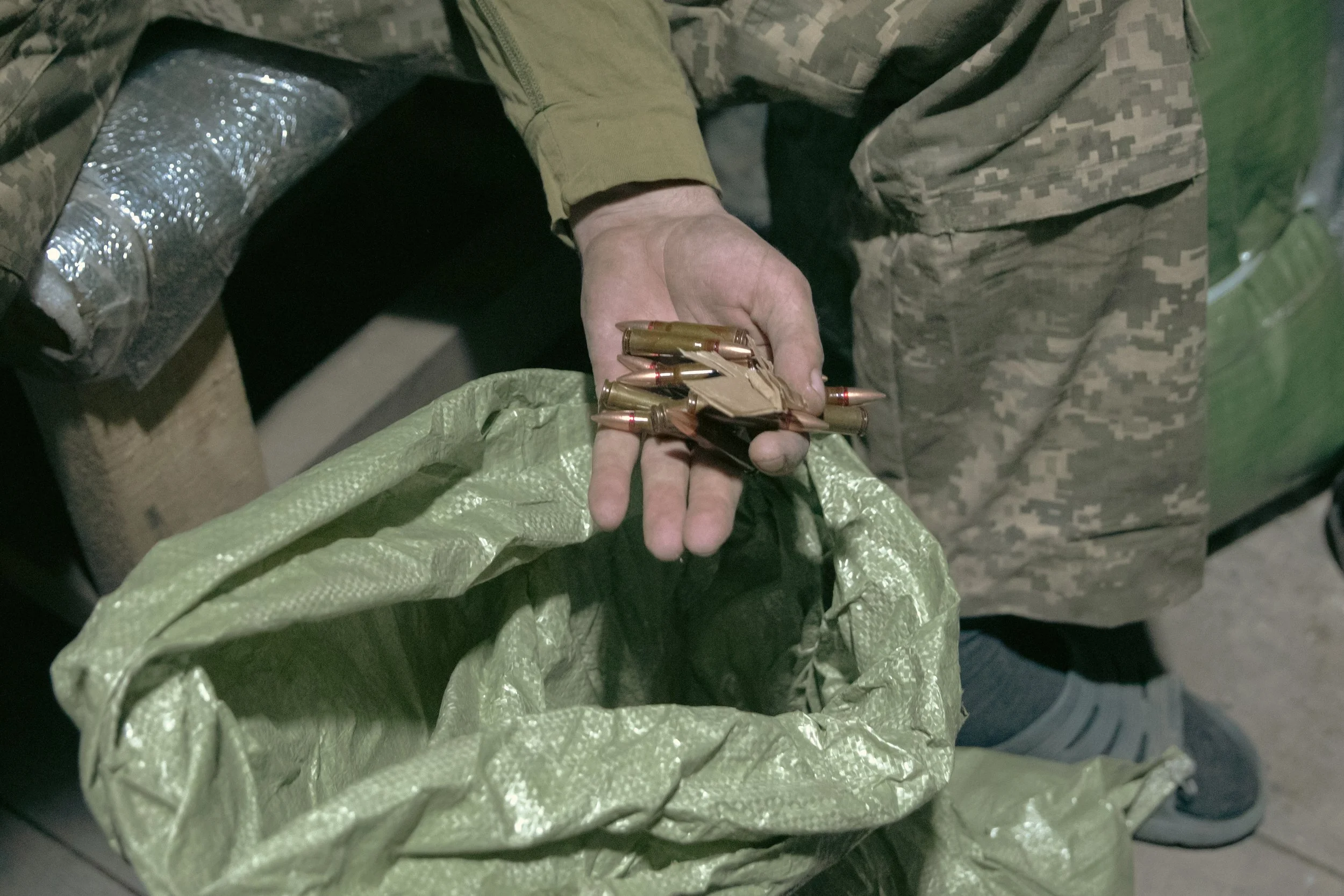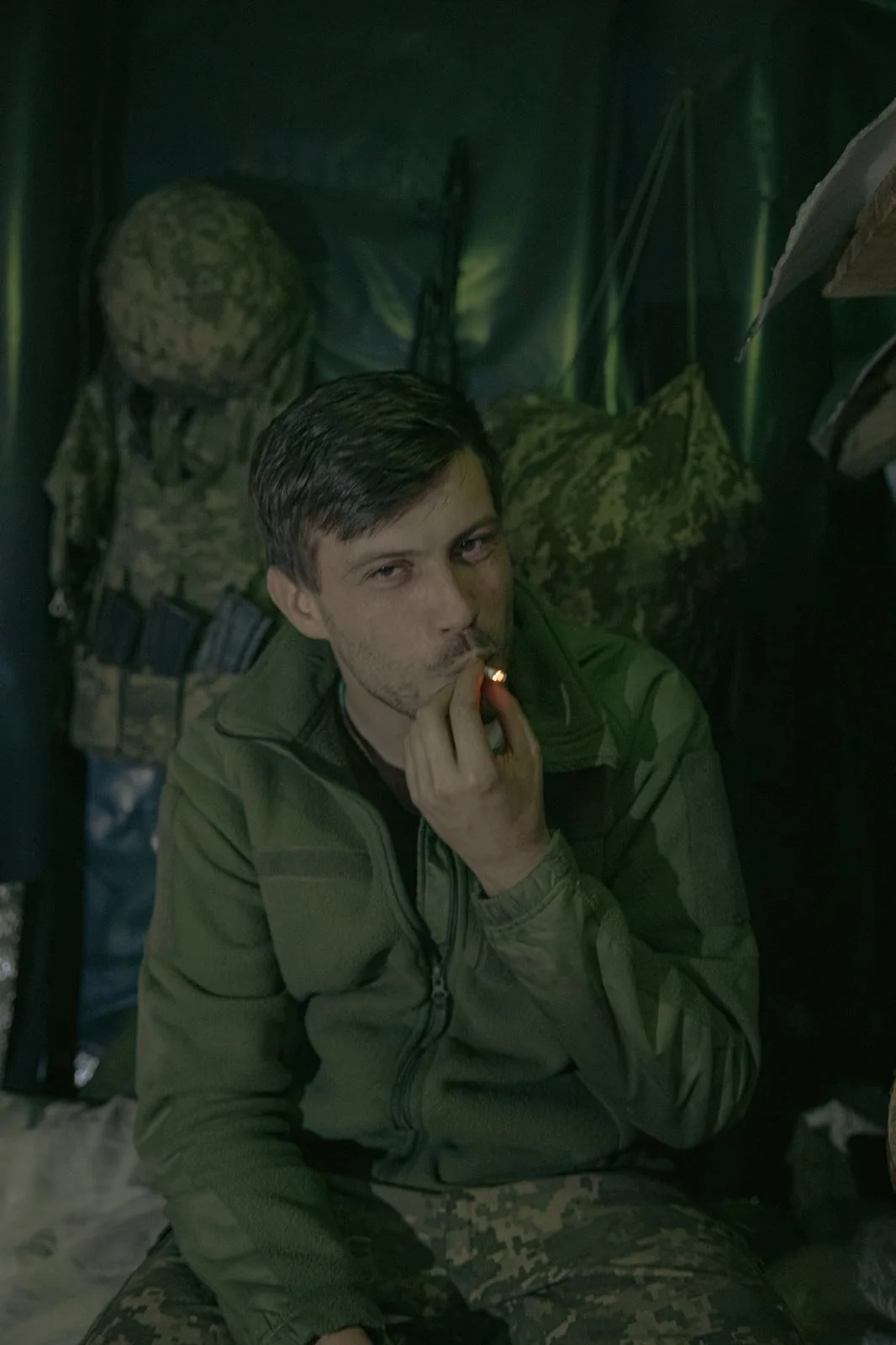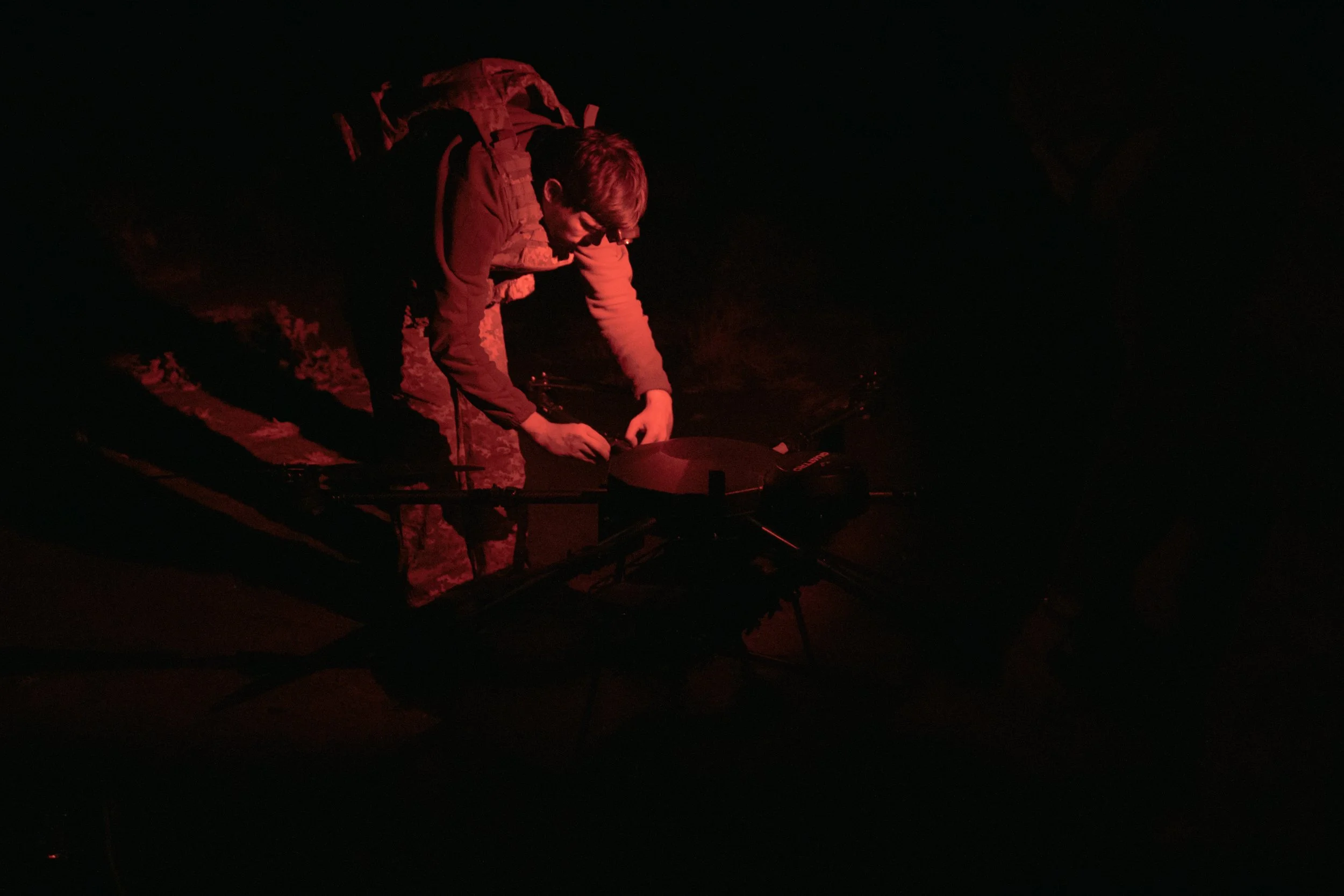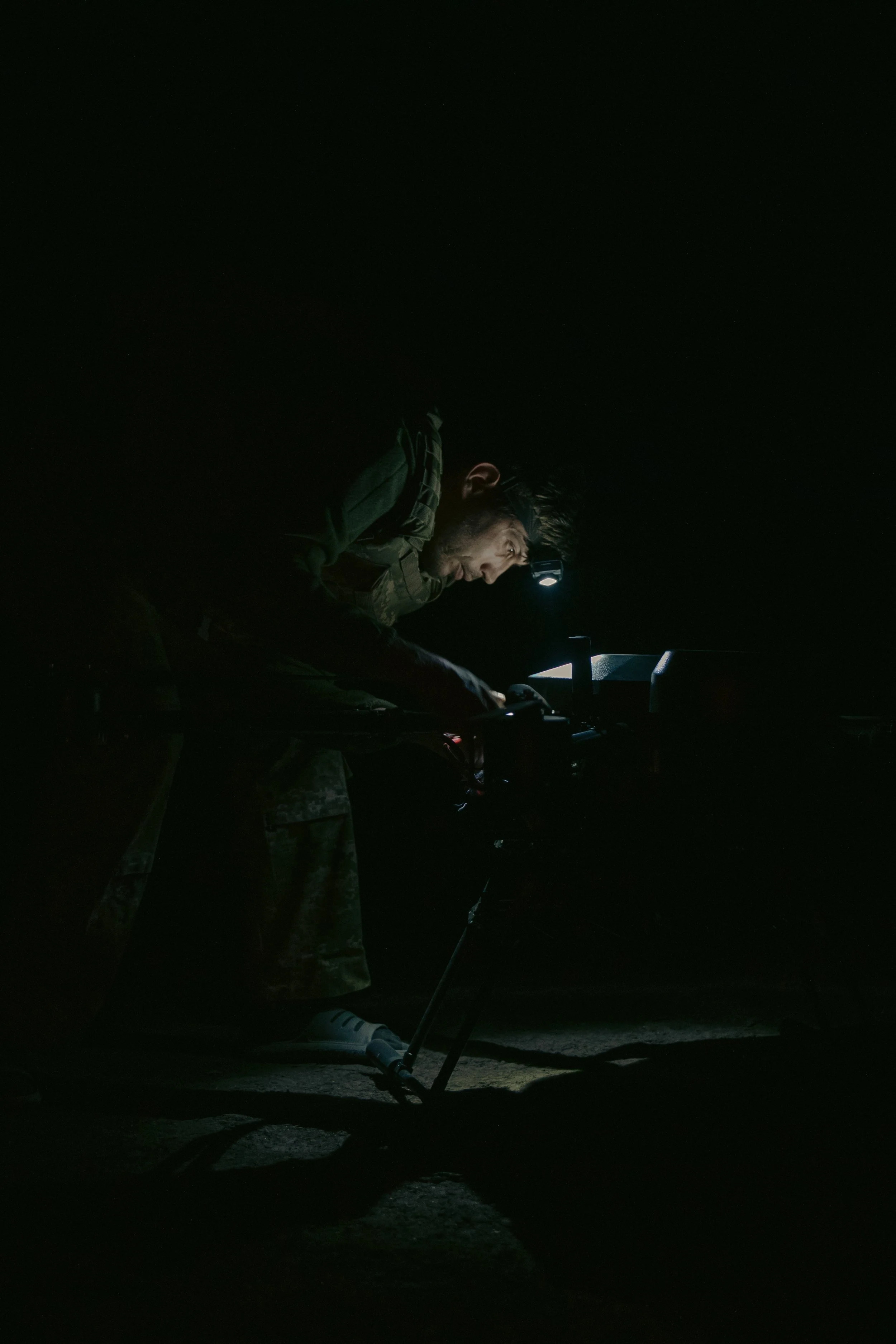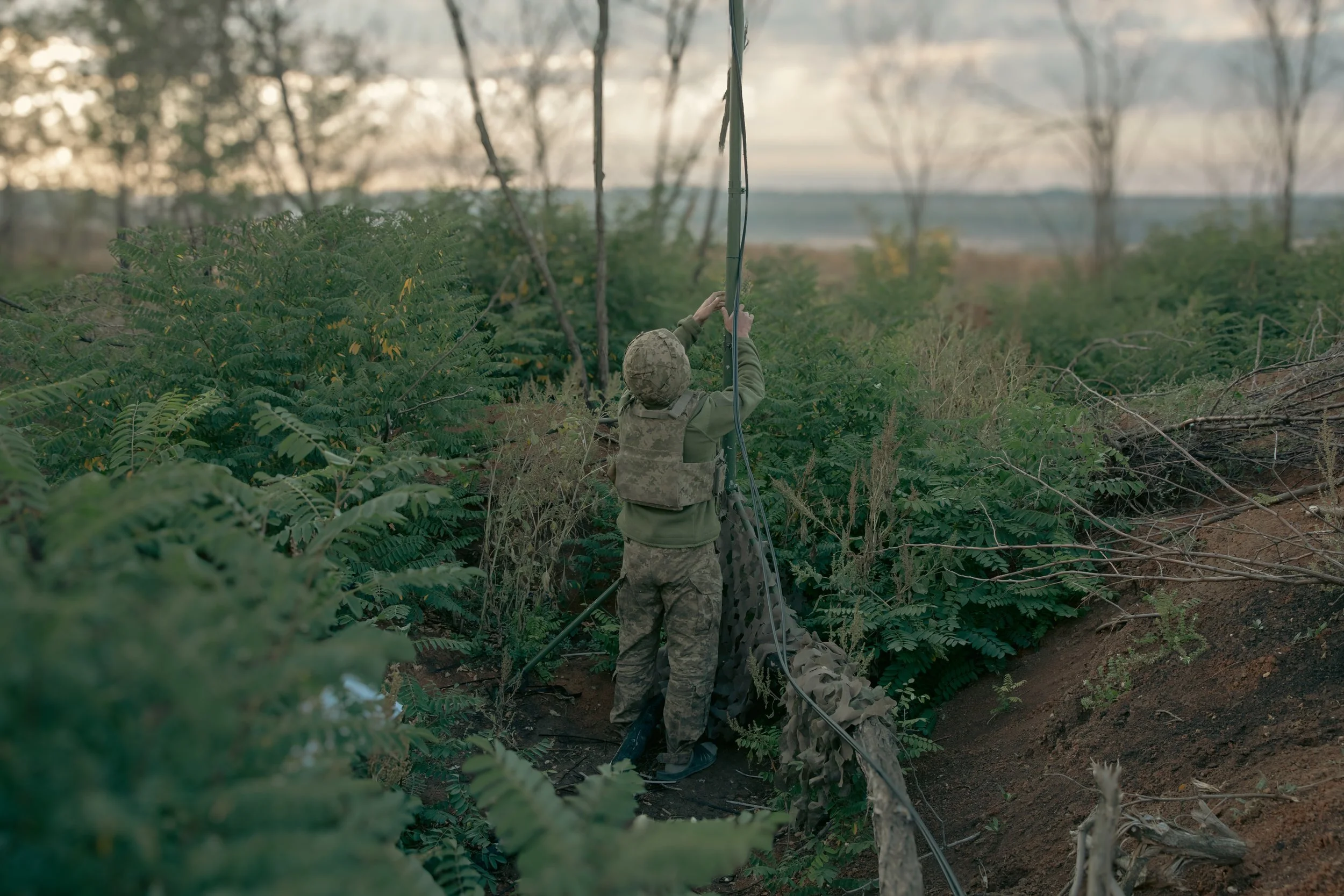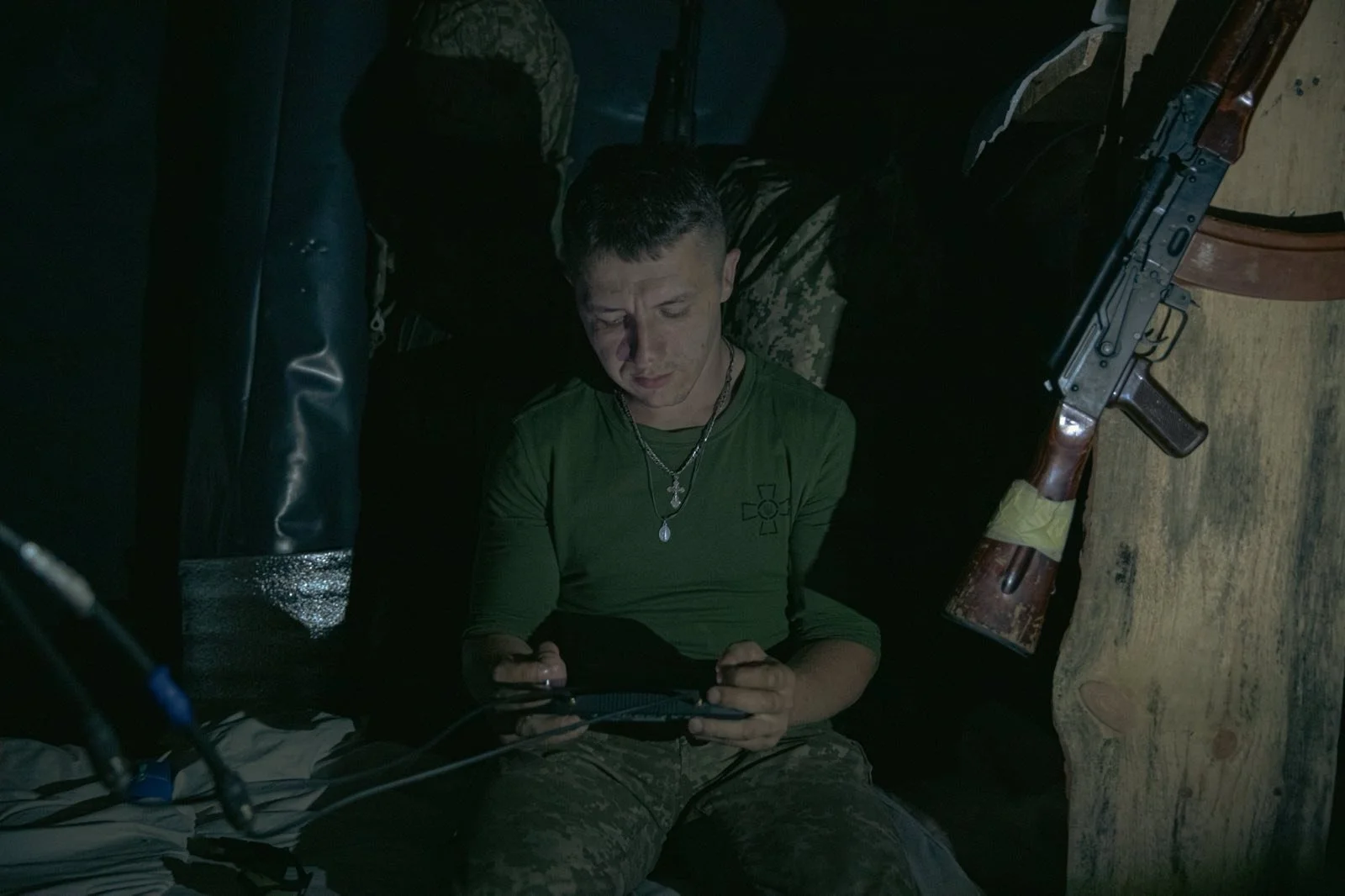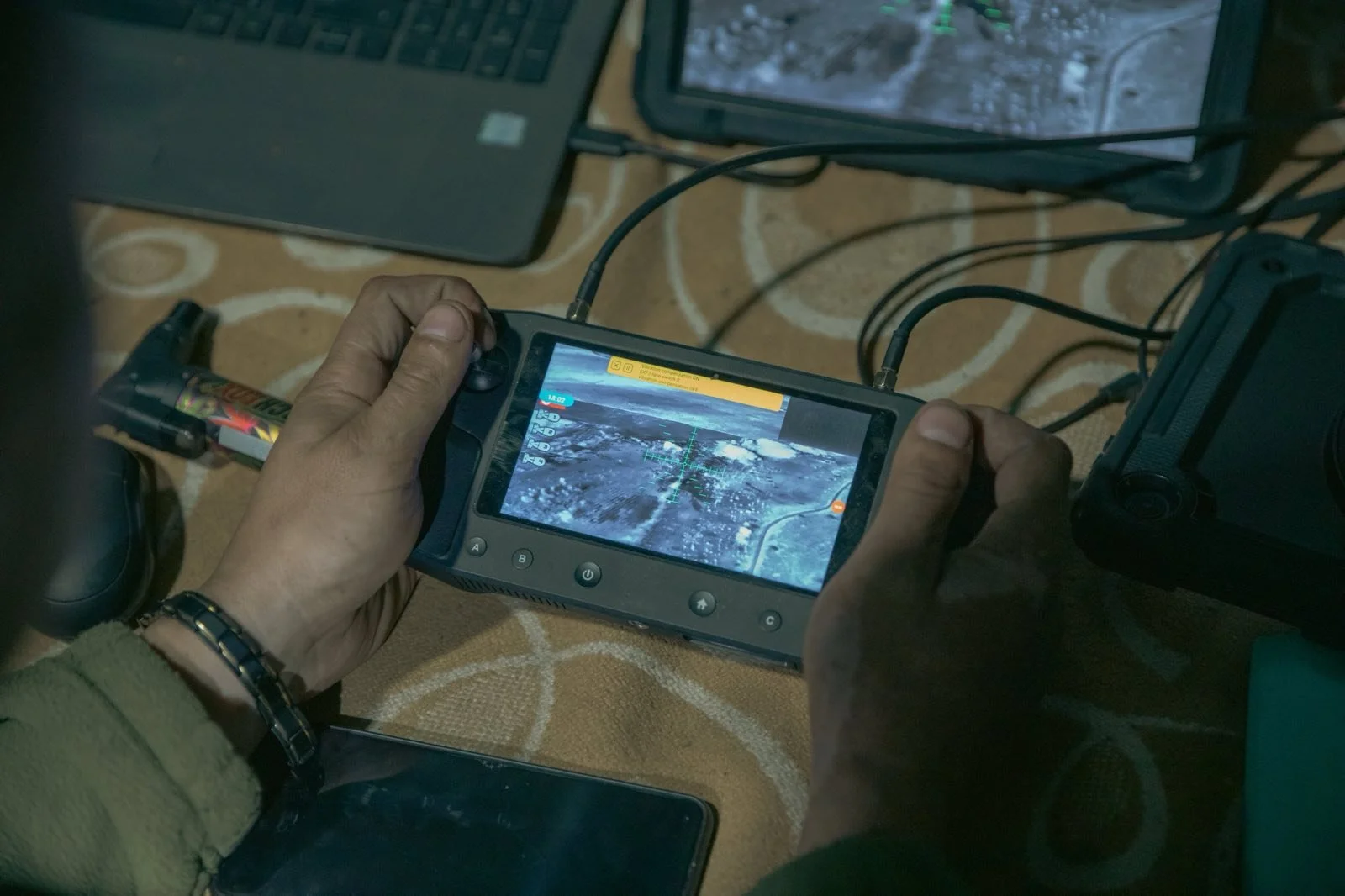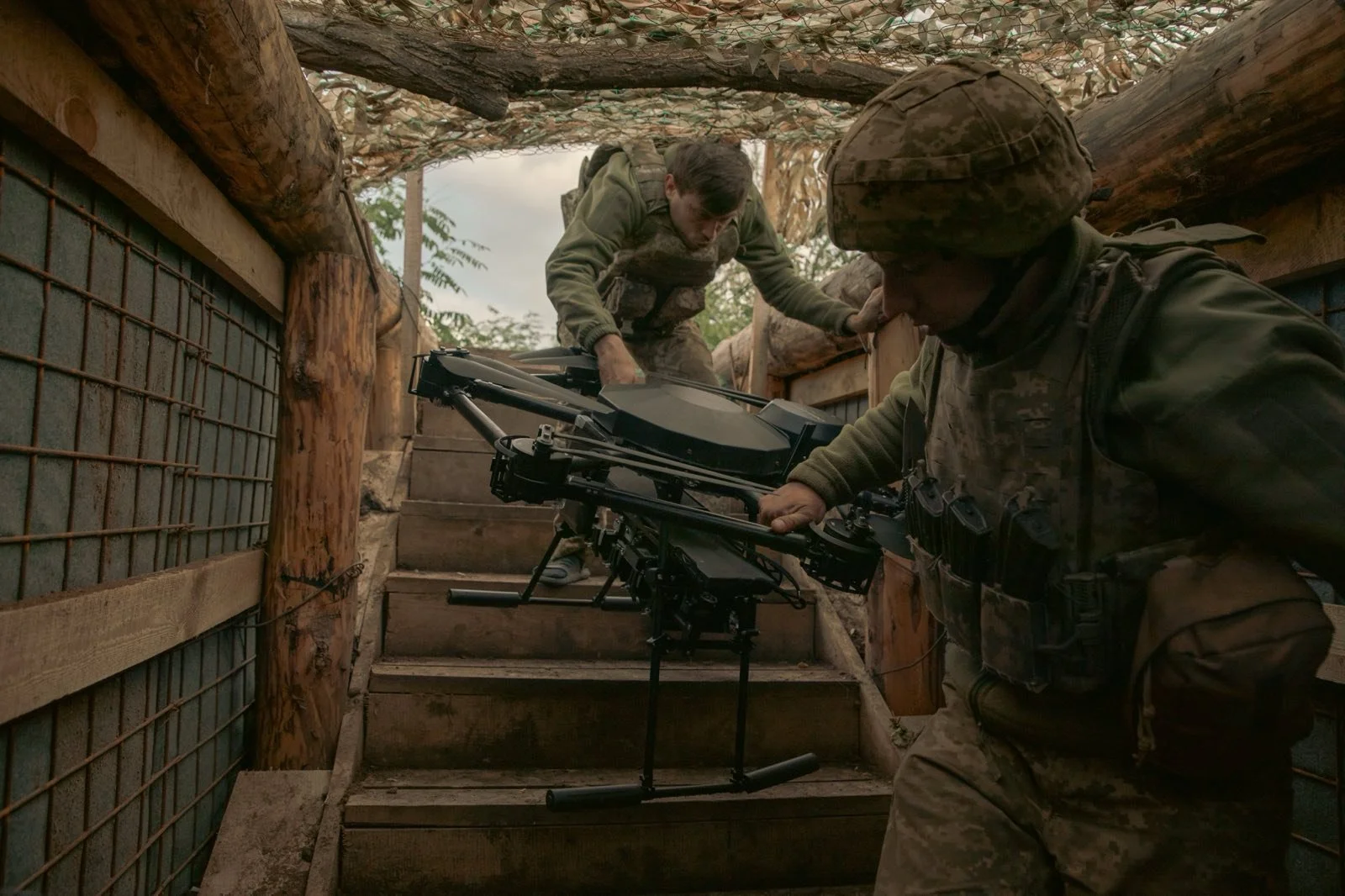Baba-Yaha: The Drone That Haunts the Russian Front
In old Ukrainian tales, the empty wild fields of Donbas are haunted. The vast open steppe in the easternmost part of the country, bordering Russia, holds something uncanny. Too vast, too empty, too dark at night. For centuries, mysterious events and unsolved disappearances were seen as acts of malevolent spirits roaming the land under the cover of darkness. The dark fertile soil that once birthed legends is now a fortress, a continuous network of trenches from its northernmost edge to the southern estuary of the Dnieper. Yet, after more than a decade of war, some tales endure. One of them in particular strikes fear into the hearts of Russian soldiers after nightfall. They call her Baba-Yaha, the dread crone. And tonight, we watch her work.
Dnipro Oblast, in the unit’s safe house, a few dozen kilometres from the frontline. The village around us was abandoned a few weeks ago, as Russian troops entered the region for the first time. Civilians left, and soldiers moved in. The warmth of late autumn now gives way to a hard star-studded sky. There’s no light around us. Just an infinite map of abandoned villages used as refuge away from the front. No water or electricity were it not for the generators. Mosquitoes hover by the sole light above the porch, under which the commander awaits. With a short and well-built frame, “Lev” exudes the calm authority his men respect. Absently smoking his electronic cigarette as men who have fought too long do, he greets us in Ukrainian, then utters words that do not need translation. “Problem, Machina, FPV.” A drone hit the car that was to take us to the position.
Soon, the scraping noise of the Toyota on the dirt road reaches us. One frontline innovation against suicide drones is simple: anti-drone cages. What looks like a lobster net is welded around the car, putting as much distance as possible between the impact point of the drone’s warhead and the passengers in the car. Every frontline car is now also equipped with jammers. In this case, they neutralised the drone chasing them, but it fell close, shredding the rear-right tire and blowing out the windows. They were hit about two kilometres further down the road from the position. The car limps to a halt and the team comes out laughing. Another night’s work, just have to fix the car before we move. A tire change and it’s time to load the supplies and equipment at the back. Rations, energy drinks and ammunition are tonight’s special. Bags quickly pile up and we are ready to leave. First, one final modification. Aladdin, our driver, takes out the deflated airbag with his knife. Geared up, everyone shakes hands. For luck, just a few words: “See you tomorrow”.
The cold air streams into the cabin from the broken windows, and the soft rattling of the cage carries us into the night. We are headed towards Mezhova, a small city near the Oblast’s eastern edge. It was completely evacuated in the past few months. Now it’s under constant shelling from artillery and glide bombs. Before reaching the town, we go dark. We are about to enter the Killzone. External lights off, cardboard over the gentle glow of the speedometer, and the jammers are turned on. Our escort equip their night vision goggles and begin scanning the skies for threats. Barrelling past Mezhova, there are still eight more kilometres to the position. In the moonlight, the haunting silhouettes of destroyed houses are clear. It’s a ghost town. Artillery flashes break the silence. Past the remnants of the town, the road opens. Sunflower fields fading into death - faint shadows whirling under the moon in a macabre dance. There’s no cover aside from sparse treelines. And the car, raw with momentum, skips over the mud patches of autumn. A few turns, more never-ending straights, and the constant edge of expecting something to come at us. Finally, we slow down. The flash of a red-light appears in front of the hood. We’re there. Soldiers rush to unload supplies under crimson shades. The blood stopping buzz of a drone hovers above. They turn on the white light, leave the supplies, and rush across the treeline to the entrance of the dugout. Fifty meters later, we are safe and underground.
Our guides are Oumni and Racoon, the two drone operators assigned to the position. Creeping through the maze of trenches, stepping over bags of supplies and ammunition. The air smells of damp wood and cold cigarettes. At the end, they reach the command centre, in the deepest area of the dugout. Confined but comfortable, it’s where they live. A small kitchen, bunk beds, and the pilot’s control console: a laptop, two screens and a remote. From this station, Oumni controls the night’s operation. His callsign is short for Rozumni, a surjik expression that best translates to smart. Brawny with a chiselled jawline, he was an engineer before being drafted after the start of the war. He now controls the Baba-Yaha.
Also known as the Vampire, the drone is a large hexacopter with a long-range capability of up to 20km. Specialised Ukrainian drone units operate them under the cover of darkness, guided by thermal cameras. They can carry heavier ordnance than typical small attack drones thanks to larger payloads, but also are used to resupply infantry positions closer to the frontline. Its nickname was given to it by Russian soldiers terrified by the rotor’s eerie wheezing, like the breath of the old witch. We were about to see why it was feared.
Orders from the unit’s commander flowed from the opened screen. Tonight’s missions were about to start. Time to take out the Vampire. Exiting the dugout under red headlamps, we are surrounded by emptiness. This close to the frontline, every moment spent outside increases the risks. They have to be fast. With the quick and precise gestures of men who have done the same task hundreds of times, they accomplish their respective duties. Oumni sets up the antenna, concealing it in nearby cover. Racoon unfolds the Vampire, calibrates it and loads it for launch. In the span of a few minutes, everything is ready, and we once again reach the safety of the underground. Controllers are turned on, maps displaying our sector are studied, and they now wait for the green light to take-off. Tonight’s flights are resupply only. Plastic bags attached below the drone’s body are to be dropped off to friendly positions.
Outside, the Vampire quickly reaches its cruising altitude. On Omni’s screen, the thermal cameras of the drone reveal the scarred land below. In black and white, the shell craters make the empty fields look like the moon’s surface. Sparse burned-out settlements break the monotony of the otherworldly landscape. After a brief flight, the white dot of a heat signature appears. Ukrainian soldiers awaiting the packages. In a few seconds, the bags are detached and carried away, disappearing in the depth of trenches nearby. Such a mission is standard, and in a night they can often do more than ten flights. With a smirk of pride, Oumni mentions his record: sixteen flights before sunrise.
The night goes on to the rhythm of the Baba-Yaha’s back and forth, each time followed by racoon’s dashing into darkness to attach new bags of supplies. As the sun rises on Donbas, there is time for one more flight, a bombing run. In the smoke-filled dugout, Racoon methodically assembles the explosives. Modified 3D-printed mortar shells are filled with shrapnel. He installs the detonator at the top of the shell, a small pressure sensor. “It looks like a rose” he says comically, before placing it next to him and making the next one. The four charges are ready now. The Vampire is back, and the sun is nearly rising. Quickly, the bombs are hooked, and the drone takes off, scanning for targets. While both focused for any enemy movement, they explain the changes of warfare. “Russian assaults mostly take place in the morning now, around five-six am”. That’s the time when drone teams change their cameras, thermal does not work well in daylight. Using this advantage, teams of Russian soldier, usually in two, advance along the treeline’s minimal cover hoping to reach a safe position. Oumni identified one in the distance.
A group of Russian soldiers are next to an open trench, one of them dragging his wounded leg through the undergrowth. “300”, Racoon laughs. An old soviet designation for wounded soldiers. It also means it’s now a slower target. The drone overs above, narrowing it’s shot. The push of a button. Death falls from above. The silent explosions light up the screen. One, two, three, four. The wounded soldier drops dead, his body on fire. His teammate is nowhere to be found. “We missed him, he found cover”. Daylight is here, it’s time to bring the Vampire back. Oumni quickly hops on a call with another drone team. He’s sends them the coordinates. He wants them to finish him off. On the screen, the live footage of the other unit. A large column of smoke rises above the treeline. It’s the body of the first soldier they hit.
“Where’s the other one?” grumbles the pilot, frustratingly taking a drag of his cigarette. “There he is!” excitedly shouts Racoon. A dozen meters away from the smouldering body of his comrade, the man is lying down in a bush. He is perfectly still. His hand grips his vest by the collar. From afar, he could be dead. The drone zooms closer to the man, his face taking over the entire screen. The man, in his thirties, dons a dirty beard, his face covered by dirt and smoke. His crazed eyes frenetically rush back and forth between the drone above him and the trench a few meters away he could use as cover. Racoon laughs again. He sees the fear in the soldier’s eyes. Another team is now in charge of the attack. A drone silently crosses the screen towards the man. An explosion. “Bada boom” says Racoon. The Russian is dead.
The Vampire lands, silenced by dawn. In the deserted fields of Donbas, where artillery replaces the morning’s birdsongs, the men silently bring back the Baba-Yaha in the darkness of the dugout. The hunger of the old tales remains, and tomorrow she will feast again.

